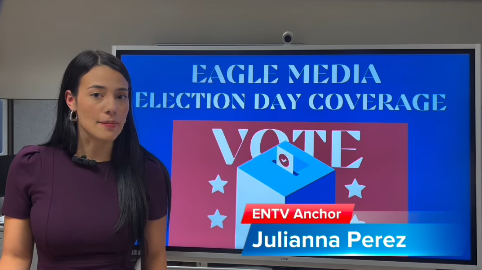After being battered by Category 4 Hurricane Ian in 2022, Southwest Florida community leaders said communication with locals was one of the top areas for improving disaster response.
Fort Myers Beach was one area hammered by the hurricane, and in anticipation of landfall, local leaders pleaded with residents to take evacuation orders seriously with the expectation of a massive storm surge event.
“Communication is one thing we’ve learned a lot through Ian,” said Jennifer Dexter, communications coordinator for Fort Myers Beach.
Fort Myers Beach faced another I-named storm during the 2023 hurricane season with Hurricane Idalia, which made landfall in the Florida Big Bend region, but grazed Southwest Florida.
Dexter said the town started doing a “daily digital newsletter” that has several thousand local subscribers, another avenue of communication they bolstered since Ian.
“I noticed our open rate [for the newsletter email] is like 70%, which is unheard of in the digital marketing world,” she said. “People are listening and paying attention.”
Even though Idalia was not forecasted to make landfall in their area, Dexter said residents still took their messaging seriously, a welcomed scene moving forward after Ian.
“People were taking [our messaging on Idalia] seriously, and listening to what we had to say,” Dexter said.
She pointed to one avenue the town hopes to utilize moving forward for communication, which is employing the assistance of WGCU Public Media, located at Florida Gulf Coast University.
“WGCU is one of our lifelines to get communication out to our students, faculty and staff,” said Diania Tsenekos, FGCU’s director of Emergency Management. “We will use them as a communications tool if needed.”
Dexter said WGCU can serve as a valuable tool in getting messaging out to residents, especially when communication lines are down closer to the coastline in places like Fort Myers Beach.
She said in future disasters, the town hopes to work more with WGCU for the safety of Fort Myers Beach residents.
“The Florida Department of Emergency Management has highlighted WGCU’s capabilities to push out critical messages during outages for the entire state of Florida, and FGCU continues to collaborate with WGCU and promote it to the wider community,” Tsenekos said.
Destruction from Ian was not limited to coastal communities like Fort Myers Beach, though; FGCU also bore some impacts.
“Our biggest challenges were how to maintain constant communication with our students, faculty and staff during a time of widespread power and cellular outages,” Tsenekos said. “And ensuring the university could resume critical on-campus services, particularly for our students and employees who were facing tremendous impacts from the storm.”
Similarly to Fort Myers Beach, the university bolstered communication efforts after the storm.
“One of the ways we did this was by launching a call center 24 hours after Hurricane Ian made landfall,” Tsenekos said. “It acted as a triage-based system for students, faculty and staff to check in, tell us how they were doing and what type of resources they needed.”
The university’s emergency management director repeated sentiments expressed by Fort Myers Beach in that when tracking Idalia, there was an “extra layer of caution.”
“The category of the storm and the projected track help to make our decisions, but safety on campus and within our community is our priority,” she said.
Aside from direct response and recovery, a universally challenging aspect of tracking hurricanes is deciphering where a given storm might make landfall, which is vital to informing Fort Myers Beach residents, or Florida Gulf Coast University students, how to prepare and what to expect.
“There is always a degree of uncertainty with a storm’s forecasted track, and it can change at any time,” Tsenekos said. “It has always been our standard process to gather leadership teams early and communicate with our campus stakeholders early, but the experience of going through a worst-case scenario.”
The National Hurricane Center’s forecast “cone” has gained increased attention and scrutiny in communities impacted by Ian, with a last-second turn east into Southwest Florida causing increased caution when examining the forecasts.
“We just don’t take it [at face value] because we know how the cone can change last minute,” Dexter said. “We were full-force prepared. We were on the edges of [the forecast cone for Idalia], and we did feel some impacts.”
Dexter concluded that the town is “much, much more prepared for any kind of emergency situation, especially hurricanes than we were beforehand.”
“I think we demonstrated that with Idalia,” she said.
























